
Acrylic is a painting technique and a type of artistic paint: essence, history, advantages, application
Acrylic is a painting technique and a variety of water-dispersible paints in which polyacrylates - special thermoplastic polymers - are used as binding agents. Acrylic paints are also widely used in construction for exterior and interior finishing work.
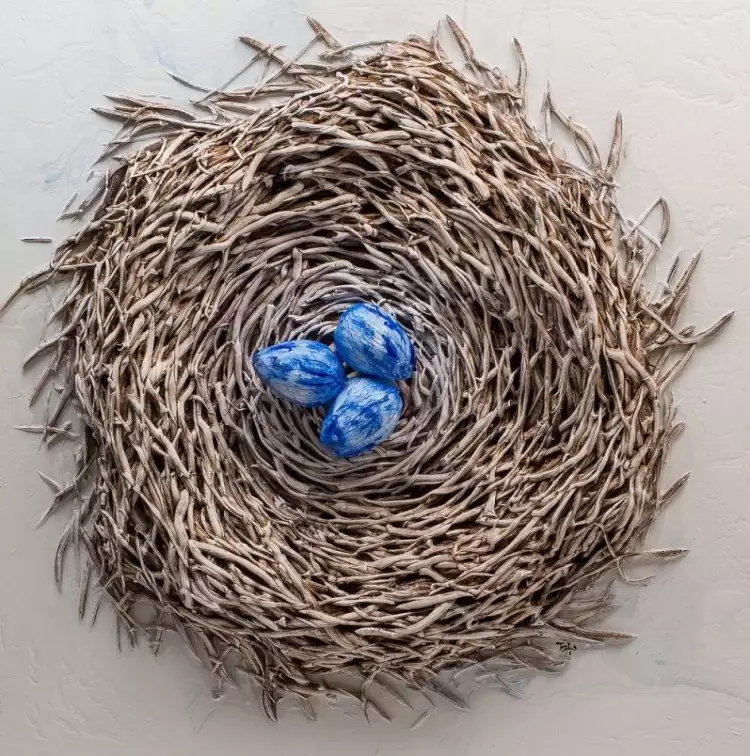 Acrylic. Justin Geffrey. Nest, 2016
Acrylic. Justin Geffrey. Nest, 2016
Acrylic has recently emerged in the creative arsenal of artists and quickly posed serious competition to traditional oil and watercolor paints. The technique of acrylic painting is ideal for creating original, vibrant paintings and drawings in a wide range of styles and genres.
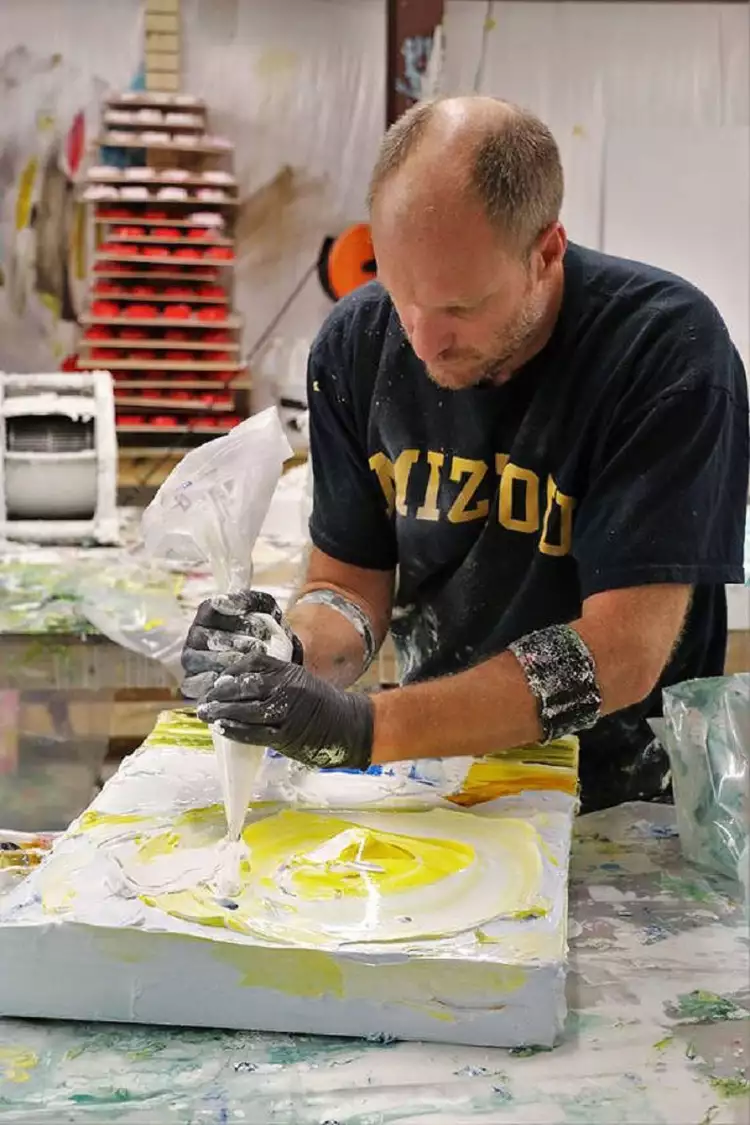 Acrylic. Justin Geffrey at work on a painting with acrylic colours
Acrylic. Justin Geffrey at work on a painting with acrylic colours
 Acrylic. Justin Geffrey. Seascape, 2019
Acrylic. Justin Geffrey. Seascape, 2019
Advantages and disadvantages of acrylic
Acrylic is a highly sought-after type of artistic material among modern painters. Its popularity is explained by numerous advantages of this type of paint:
- Fast drying time. The water present in the paint evaporates rapidly, forming a strong, colored film on the canvas or paper.
- Enhanced elasticity. Dried paint retains sufficient flexibility and doesn't crack over time.
- Absence of toxic components. Acrylic pigments are entirely safe for human health and the environment.
- Wide range of colors. Modern manufacturers offer artists a vast selection of shades to suit any preference.
- Excellent coverage. Acrylic adheres perfectly to various materials: paper, cardboard, wood, glass, metal, fabric, plastic, or primed surfaces.
- Color mixing ability. Many artists only need a set of 12 basic colors, which can be mixed to produce hundreds of different shades.
- Resistance to moisture. After drying, acrylic cannot be washed off the surface of a painting with water; a special solvent is needed for paint removal.
- Variety of textures. By adding water, artists can adjust the consistency of the paint, from very thick to extremely fluid.
- Versatility in mixed media techniques. Acrylic blends well with ink, watercolor, markers, and other artistic materials.
- Absence of unpleasant odors. Due to its composition (without organic solvents), acrylic paint does not release microscopic aromatic particles into the air as it dries.
- Affordability. Acrylic paints are sold at a lower price compared to many oil-based counterparts.
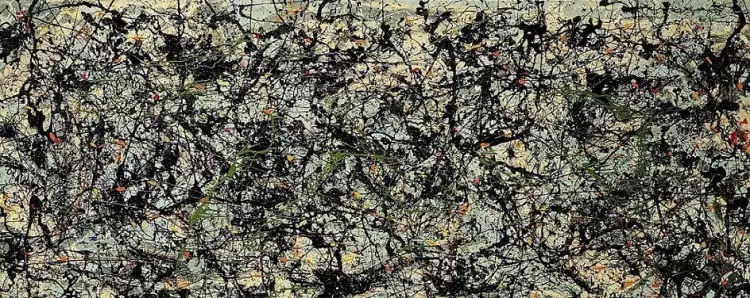 Acrylic. Jackson Pollock. Lucifer, 1947
Acrylic. Jackson Pollock. Lucifer, 1947
Acrylic has only two minor drawbacks. Firstly, the paint applied to a ground can slightly darken over time. Secondly, due to its fast drying, artists might find it challenging to make corrections to their work when errors are discovered.
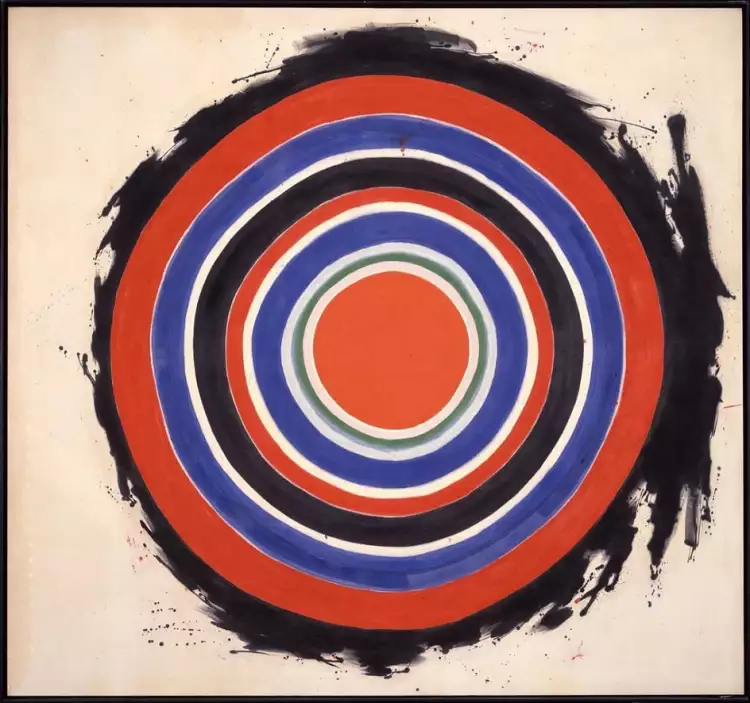 Acrylic. Kenneth Noland. Beginnings, 1958
Acrylic. Kenneth Noland. Beginnings, 1958
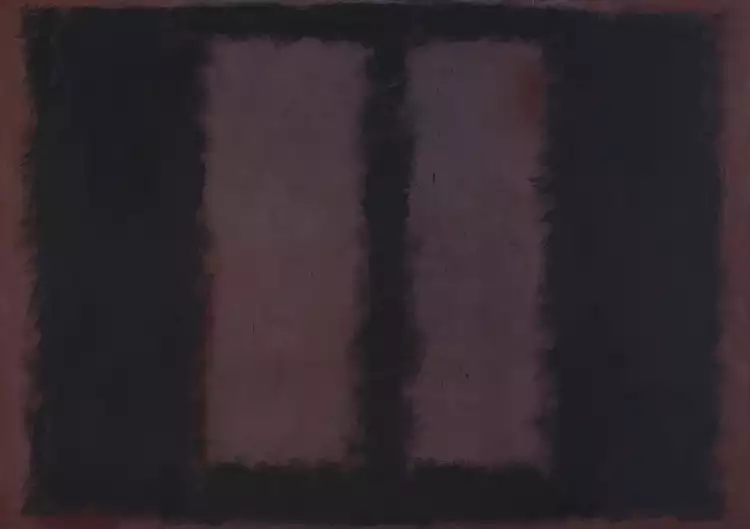 Acrylic. Mark Rothko. Black on Brown, 1958
Acrylic. Mark Rothko. Black on Brown, 1958
History of Acrylic Paints and Technique
The history of acrylic begins with the discovery in the late 1920s by the German chemist Otto Röhm of polymethyl methacrylate - a durable transparent plastic known worldwide as acrylic glass. In 1933, Röhm invented a method for dissolving solid polymer resins in solvents, leading to the emergence of the first industrial acrylic paints.
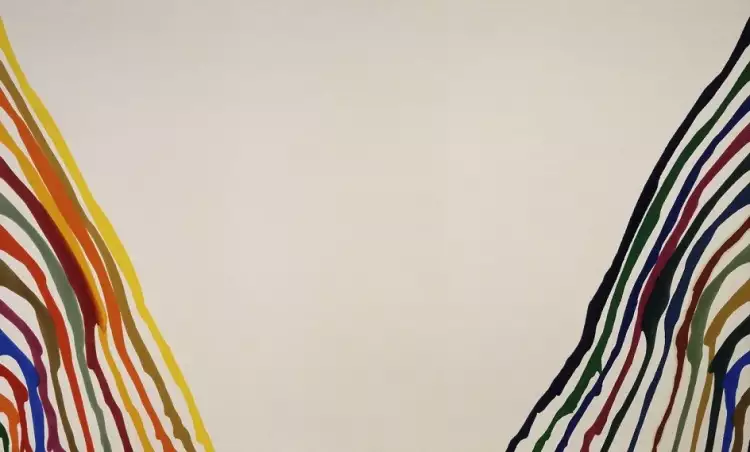 Acrylic. Maurice Louis. Theta, 1961
Acrylic. Maurice Louis. Theta, 1961
In the mid-1930s, Leonard Bocour and Sam Golden founded the company Bocour Artist Colors, specializing in artistic materials. Initially, they focused on producing traditional oil paints, but after 10 years, they became seriously interested in polymer pigments. In 1947, they introduced the first artistic acrylic paint, Magna, to the market, which was based on an organic solvent - turpentine.
 Acrylic. Barnett Newman. Voice of Fire, 1967
Acrylic. Barnett Newman. Voice of Fire, 1967
Thirteen years later, in 1960, Bocour and Golden successfully developed water-based acrylic paints, which entered the retail market under the brand name Aquatec. From this moment, artists had a new creative material. The advantages of acrylic were highly appreciated by representatives of various art movements:
- Pop art and abstractionism.
- Hyperrealism and neo-realism.
- Op art and art deco.
- Postmodernism and abstract expressionism.
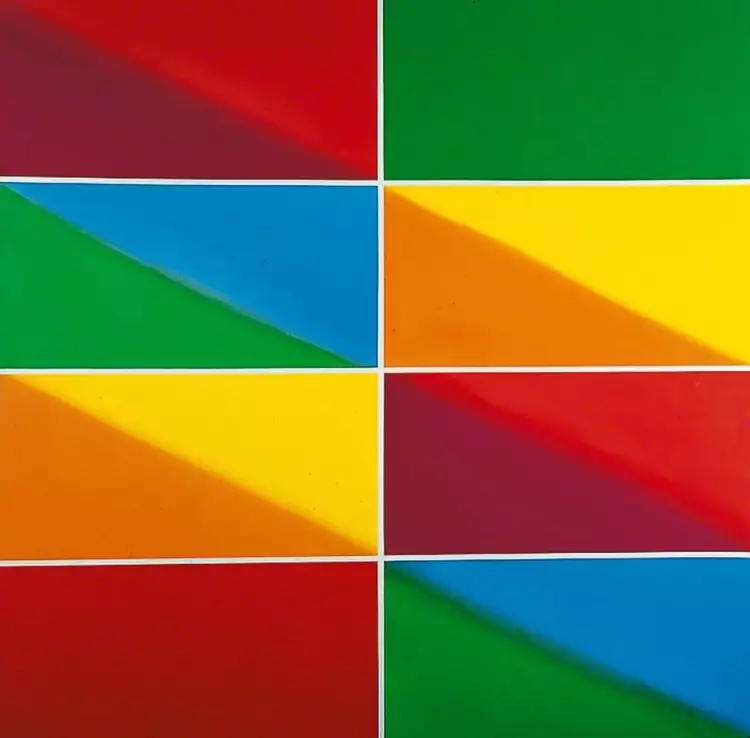 Acrylic. Mark Lancaster. Cambridge red and green, 1970
Acrylic. Mark Lancaster. Cambridge red and green, 1970
From the 1960s to the present day, acrylic has firmly established itself as one of the main techniques in modern painting. These versatile synthetic-based paints do not require complex solvents and offer excellent color brilliance. With their help, visual artists annually create tens of thousands of impressive artworks.
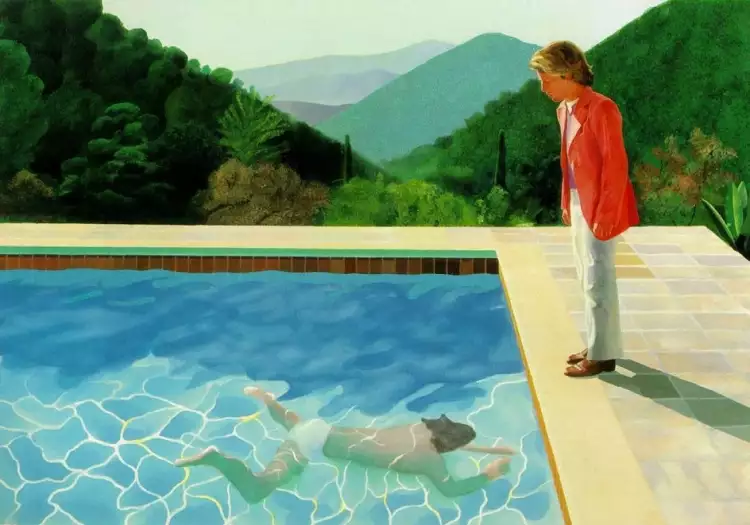 Acrylic. David Hockney. Portrait of the artist, 1972
Acrylic. David Hockney. Portrait of the artist, 1972
 Acrylic. Fundora Laser. The Thinker, 2008
Acrylic. Fundora Laser. The Thinker, 2008
Famous Artists Who Worked in Acrylic Technique
Among the renowned artists who used acrylic in their work, there are numerous globally celebrated figures. A significant contribution to popularizing acrylic painting was made by:
- Mark Rothko. The brilliant creator of color field painting, he was one of the first to embrace acrylic paints in the late 1940s. It was during this time that he began working in the style of abstract impressionism and gained worldwide recognition.
- Jackson Pollock. Acrylic paints were a perfect fit for his famous drip painting technique. Up until his death, Pollock actively used his favored technique to create his large-scale abstract works.
- David Hockney. An iconic representative of pop art, he enjoys working with acrylic paints. His most famous work, "Portrait of an Artist," was created in 1972 using acrylic.
- Justin Gaffrey. The distinctive contemporary self-taught painter's artworks are unmistakable. A former restaurant owner turned renowned artist, Gaffrey creates textured paintings in vibrant colors. He employs an original technique using pastry bags and nozzles.
- Neil Hamelin. A contemporary Canadian artist who gained widespread recognition for his realistic works. He excels in capturing charming rural landscapes as well as evoking deep spiritual sentiments through depictions of sailing ships.
 Acrylic. Neil Hamelin. Rural landscape, 2015
Acrylic. Neil Hamelin. Rural landscape, 2015
Enthusiasts of both classic and avant-garde art can always participate in art auctions on the Very Important Lot platform to acquire masterpieces of painting or sculpture. Our website also offers a convenient opportunity to purchase paintings and drawings from contemporary artists at affordable prices.
 Numismatics is a serious scientific discipline or enthusiastic collection of ancient coins
Numismatics is a serious scientific discipline or enthusiastic collection of ancient coins  Academism is an authoritative, virtuoso, and conservative style
Academism is an authoritative, virtuoso, and conservative style 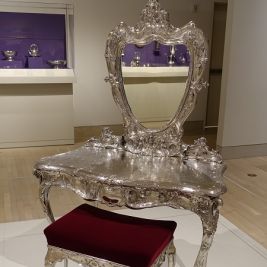 American Silver - From Colonial Times to the Present
American Silver - From Colonial Times to the Present  Caspar David Friedrich is the most famous and melancholic romanticist of German painting
Caspar David Friedrich is the most famous and melancholic romanticist of German painting  Current Popular Items in the Antique Market
Current Popular Items in the Antique Market  Antique arms and armour from all over the world
Antique arms and armour from all over the world 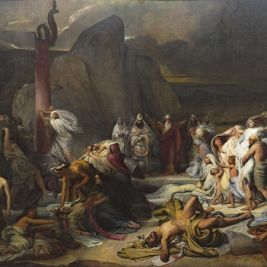 The painting "The Bronze Serpent" by Fyodor Bruni is an interpretation of an Old Testament story by a great master
The painting "The Bronze Serpent" by Fyodor Bruni is an interpretation of an Old Testament story by a great master 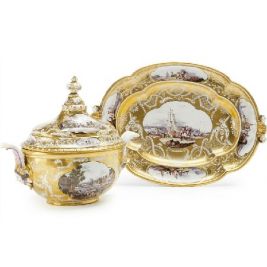 German Porcelain: History of Creation and Development
German Porcelain: History of Creation and Development  Silver - a noble metal
Silver - a noble metal  The painting "The Wanderer" by Vasily Grigorievich Perov portrays the image of noble poverty and human dignity
The painting "The Wanderer" by Vasily Grigorievich Perov portrays the image of noble poverty and human dignity